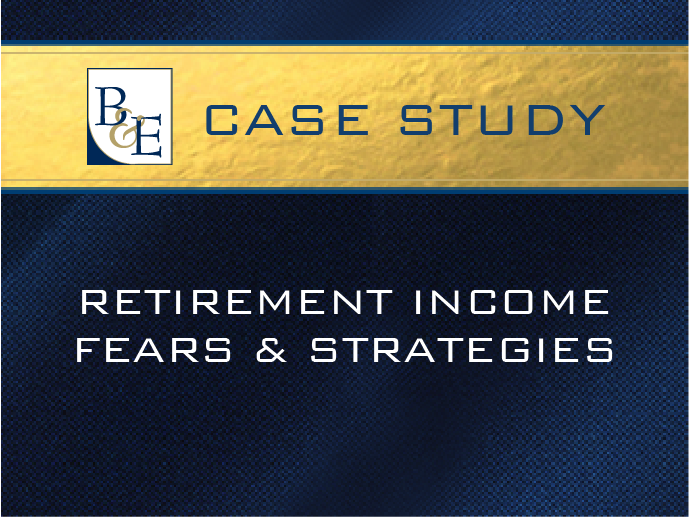Background: A couple was retiring at age 59/58 and were concerned about income planning and risk management as they transitioned into creating their own pay check versus working for one. The market volatility has been causing additional stress in the decision making process.
Our Case: The couple had saved up roughly $650,000 in retirement assets and had $100,000 in non retirement savings. Their spending needs were calculated at $5,000 per month.
The Question: The question was how the retirees should position their assets in order to generate income both in the long term and short term outlook. Secondly, when should the couple begin Social Security to offset asset depletion from spending?
The Results: By allocating the retirement savings into four places, a money market account, an allocated portfolio of Exchange Traded Funds (ETF) invested in stocks and bonds, a hedged portfolio of Exchange Traded Funds invested in stocks and bonds and a Variable Annuity with Income Guarantees, we were able to reduce market volatility and its effect on withdrawals, create a guaranteed income base they could access in five years, and delay Social Security to increase the couple’s lifetime estimated benefit. In the hedge program, during periods of market volatility the account purchases futures contract that can help offset downturns but still participates in upswings when the market rises. The overall goal of the strategy is to reduce downside return by 75% in return for giving up 25% of the upside potential.
Bottom Line: The money market and hedged ETF portfolio would provide the couple’s income needs from now until age 64 or 65. At age 64 the Variable Annuity could be “turned on” to provide them a known income plan that when combined with their Social Security benefits would equal the income needs. The non-hedged ETF program would provide them some liquidity and supplemental income should the needs arise but would not be relied on for the couple’s base needs.
Any dollars left in the hedged program and money market account could then be allocated into the non-guaranteed account for supplemental withdrawals.
Under this plan market volatility would not affect the couple’s base income needs and only the amount the couple would have as a safety net or for spending “wants” would be subject to market volatility.
Overall, the couple felt more comfortable knowing their Social Security benefits will continue to rise since they were not collecting them, their income needs could be met without the risk of market volatility and most importantly they could transition into creating their own pay check.
This is a hypothetical example for illustrative purposes only. The experience of this client may not be representative of the experience of all clients and is not indicative of future results. Any tax advice contained herein is of a general nature and is not intended for public dissemination. Further, you should seek specific tax advice from your tax professional before pursuing any idea contemplated herein. This advice is being provided solely as an incidental service to our business as financial planner. Securities offered through ValMark Securities, Inc. Member FINRA, SIPC. Financial Planning and Investment Advisory Services offered through B & E Investment Advisers, Inc. Business & Estate Advisers, Inc. and B & E Investment Advisers, Inc. are separate entities from ValMark Securities.


 A Tax Effective Tender
A Tax Effective Tender
